Imagine sand stretching as far as the eye can see, formed by relentless winds into huge sand dunes that surpass even the tallest buildings. Imagine blistering heat and bone-dry silence, broken only by the whisper of shifting sand. This is the Empty Quarter, also known as the Rub’ al Khali, a land of mesmerizing beauty and incredible endlessness.
But the Empty Quarter is more than just a huge field of sand. It’s an area full of secrets, where centuries-old trade routes once pulsed with life, where hidden water sources nurture delicate ecosystems, and where towering dunes whisper tales of geological history. It’s a land that challenges our notions of empty space, revealing a surprising wealth of life, history, and scientific mystery.
In this blog post, we go on a journey: “How big is the empty quarter?” We’re going to investigate its staggering size, explore its diverse landscapes, and uncover the secrets hidden underneath its seemingly barren surface. We’ll see the resilience of life in this challenging environment, trace the footsteps of intrepid explorers, and understand the ongoing scientific quest to unravel its mysteries.
Table of Contents
Size and Scale: A Desert that Dwarfs Imagination
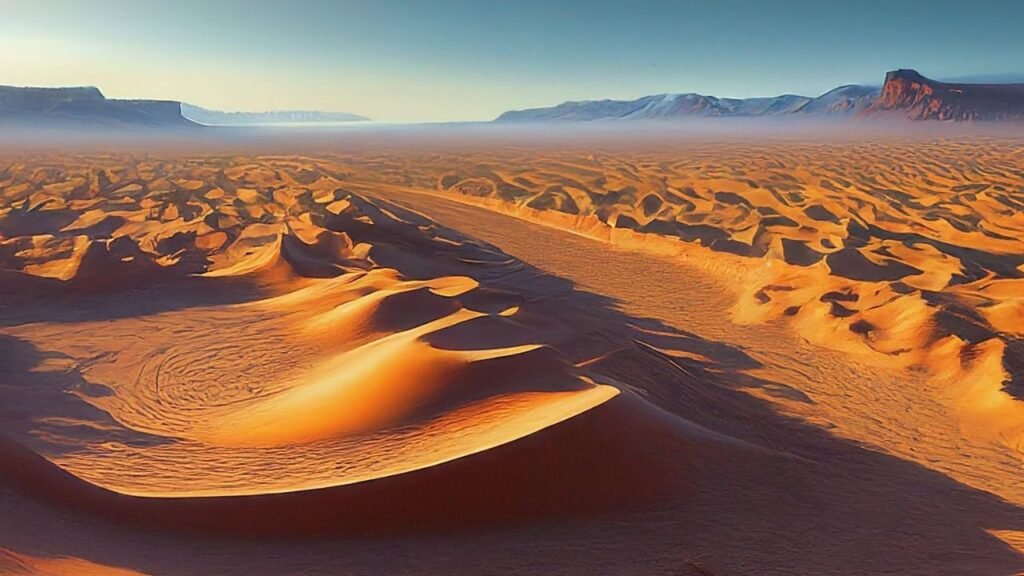
Close your eyes and imagine the largest sand desert you can. Does it reach the horizon? Are its sands the height of multi-story buildings? Even the most vivid imagination might struggle to capture the true enormity of the Empty Quarter. Stretching across the southern Arabian Peninsula, this desert leviathan reigns supreme as the world’s largest unbroken sea of sand, swallowing an area of a staggering 650,000 square kilometers (250,000 square miles). To truly grasp its magnitude, let’s put it into perspective:
- Larger than France: That’s right, the Empty Quarter could blanket the entire country of France with room to spare, leaving its iconic landmarks dwarfed by towering dunes.
- Half the size of the Sahara: While the Sahara holds the title of the world’s largest desert overall, the Empty Quarter holds its own, covering nearly half the area of its North African counterpart.
- Bigger than your favorite state: Depending on where you live, the Empty Quarter could easily engulf your entire state. Imagine it swallowing Texas whole or stretching from California to Maine—that’s the kind of space we’re talking about.
But size is more than just a numerical value. The hugeness of the Empty Quarter translates into a truly awe-inspiring experience. Imagine standing atop a dune with the endless stretches of sand stretching out before you, blurring into the horizon. The feeling of insignificance is humbling yet strangely empowering, reminding us of the immense power of nature and the vastness of our planet.
This size also plays a crucial role in shaping the desert’s environment. The vast expanse amplifies the temperature extremes, creating a rapidly arid climate. Winds whip across the landscape, sculpting the sand into colossal dunes and shaping the unique ecology of the region. So, the next time you hear mention of the Empty Quarter, remember, it’s not just a desert; it’s a land of staggering proportions, where size truly matters.
Topography and Landscapes: A Symphony of Sand and Stone
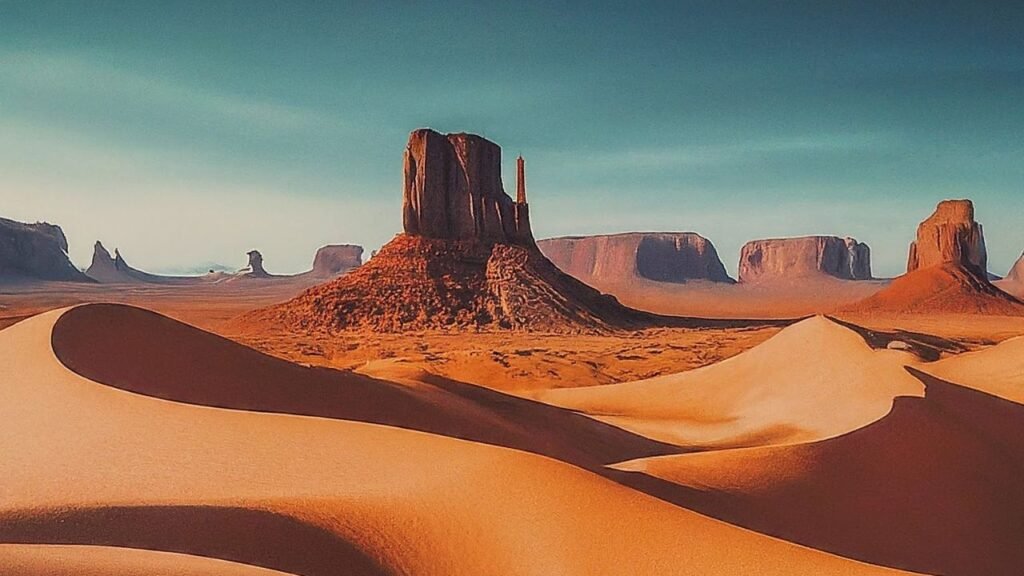
Close your eyes and picture the Empty Quarter – is it a monotonous wasteland of endless sand? While sand dunes are undoubtedly the stars of the show, this desert boasts a surprisingly diverse and dynamic topography. Buckle up as we embark on a journey through its captivating landscapes.
Towering Titans: The Sand Dunes
Without a doubt the most iconic feature, the Empty Quarter’s sand dunes are awe-inspiring giants. Reaching dizzying heights of 300 meters (984 feet), they dwarf even the tallest skyscrapers, creating a humbling and majestic spectacle. These are not static mountains, though. Driven by relentless winds, they continuously shift and reshape, painting the desert with ever-changing patterns and textures. Imagine the thrill of climbing these behemoths and gazing out at the endless sea of sand, feeling the wind sculpt the landscape around you.
Beyond the Dunes: A Mosaic of Diversity:
While dunes dominate, the Empty Quarter holds more surprises. Vast gravel plains offer a contrasting landscape, their flat expanse broken by occasional rocky outcrops. These seemingly barren areas harbor hidden beauty, supporting unique plant life adapted to survive in the harsh conditions. Scattered throughout are also smaller sand sheets and interdunal basins, creating a diverse mosaic of micro-environments that nurture a surprising array of flora and fauna.
Landmarks that Tell Stories:
The Empty Quarter’s topography speaks volumes about its history. Look closely, and you’ll find remnants of ancient wadis (dry riverbeds), whispering tales of a wetter past. The towering Massif al-Uwayrid, a volcanic complex rising amidst the sand, offers a glimpse into the desert’s geological past. These natural landmarks are not just scenic wonders; they’re windows into the evolution and secrets of this captivating region.
Climate and Environment: Where Extremes Rule
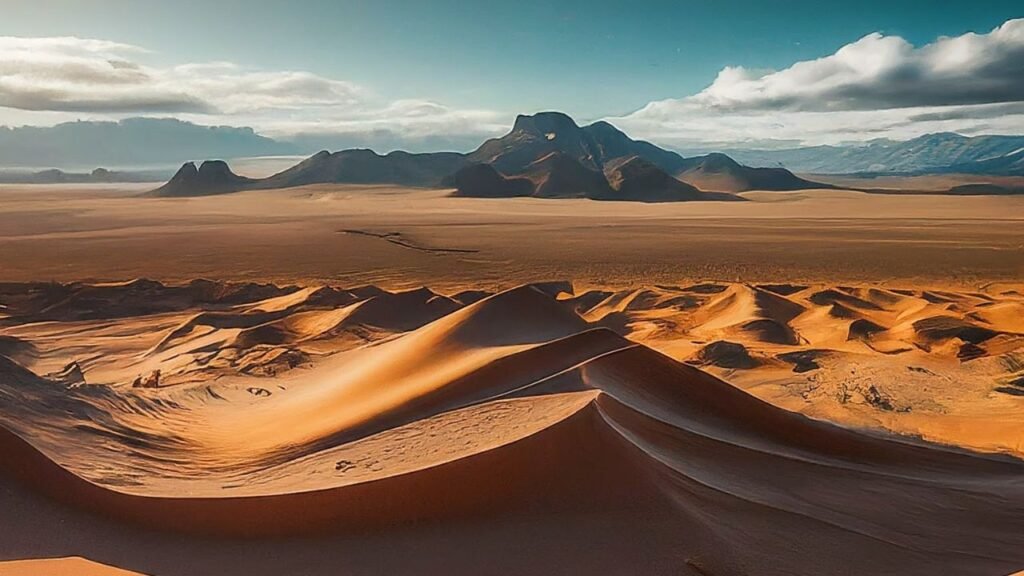
The Empty Quarter isn’t just big; it’s fiercely harsh. Imagine scorching temperatures that soar to 50°C (122°F), relentless winds whipping across the sand, and an average annual rainfall of a measly 25 millimeters (1 inch). It’s a land of extremes, where survival is a constant battle for both plants and animals.
This aridity paints the environment in stark contrast. Lush vegetation is replaced by drought-resistant shrubs and desert-adapted plants, each with unique adaptations to conserve water. Animals like sand cats and gazelles showcase remarkable resilience, finding sustenance in the sparse resources and escaping the heat by burrowing or seeking shade.
Despite the harshness, life persists. Underground water reserves (aquifers) hold the key, providing a lifeline for desert life and human settlements. But these resources are precious and finite, reminding us of the delicate balance in this fragile ecosystem.
The Empty Quarter’s climate and environment are not static. Sandstorms sweep across the landscape, sculpting dunes and shifting the very fabric of the desert. Rare but intense rainfall events can transform the parched land into temporary havens of life, showcasing the desert’s remarkable ability to adapt and bloom.
Understanding this environment is crucial for its conservation. The Empty Quarter may seem harsh, but its delicate balance deserves respect and protection.
Human History and Exploration: Shadows in the Sand
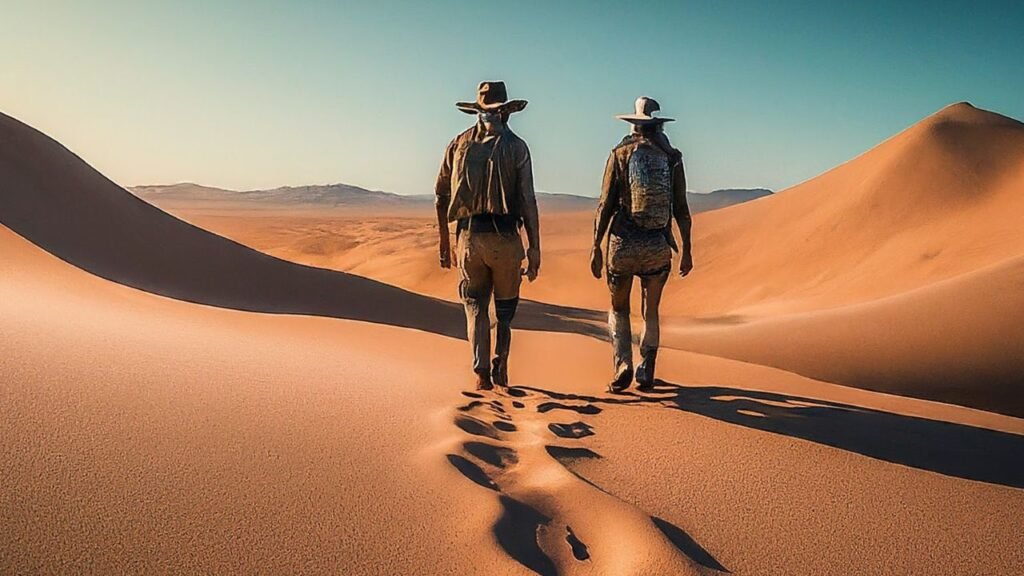
The Empty Quarter may appear desolate, but its sands whisper tales of human presence stretching back millennia. Ancient trade routes, like the famed frankincense trail, snaked through this harsh landscape, connecting civilizations and fostering cultural exchange. Imagine caravans laden with precious spices traversing the dunes, leaving behind footprints that have long been reclaimed by the sand.
Early exploration of the Empty Quarter was fraught with danger. Tales of intrepid explorers like Bertram Thomas, the first Westerner to cross the entire desert in 1931, speak of immense challenges and unwavering determination. His journey, undertaken on camelback with Bedouin guides, is a testament to human resilience and the allure of the unknown.
Today, modern exploration delves deeper, using advanced technology to unlock the secrets of the desert’s past. Archaeological digs unearth remnants of lost settlements, offering glimpses into ancient civilizations that thrived in this seemingly inhospitable land. Researchers study petroglyphs (rock carvings) etched by long-gone inhabitants, deciphering the stories etched in stone.
But exploration isn’t just about the past. The Empty Quarter’s vastness holds secrets about our planet’s history and climate change. Scientists study the movement of sand dunes, the composition of groundwater reserves, and the unique adaptations of desert life, gaining valuable insights into the Earth’s systems and the impact of human actions.
Responsible tourism also plays a role. Carefully managed visits allow individuals to experience the awe-inspiring beauty of the Empty Quarter while ensuring respect for its fragile ecosystem and cultural heritage. By understanding the history of exploration and embracing responsible tourism, we can ensure that the stories whispered by the sands continue to be told for generations to come.
So, the next time you hear about the Empty Quarter, remember – it’s not just a barren expanse. It’s a land where history and modern science intertwine, where the shadows of explorers past guide the discoveries of tomorrow, and where the vastness inspires not just awe, but also a responsibility to understand, protect, and learn from this extraordinary corner of our planet.
Crossing the Empty Quarter Desert
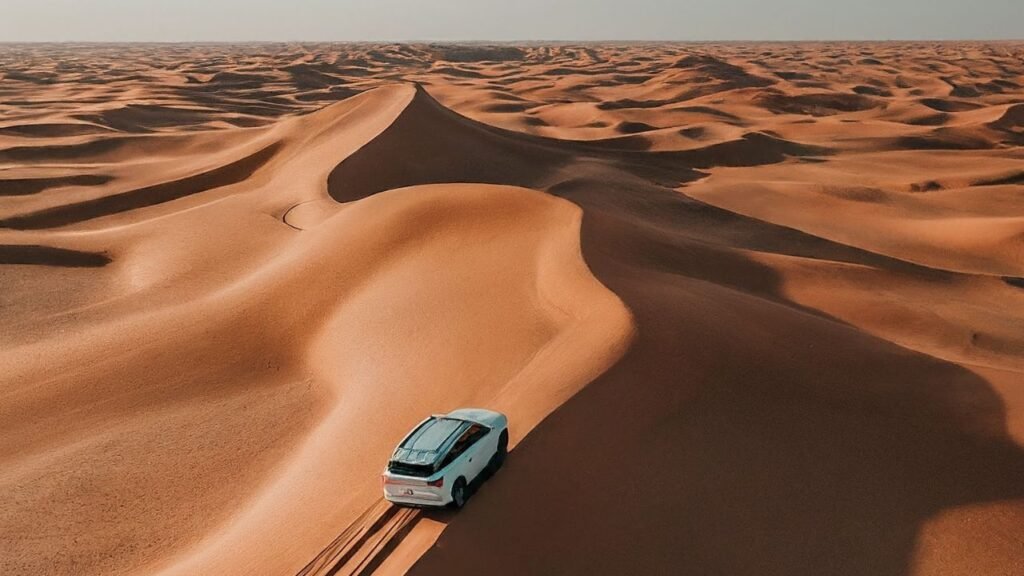
This is an info alert. Lorem ipsum dolor sit amet, lectus adipiscing elit.
Crossing the Empty Quarter is not a decision to be taken lightly. It requires thorough planning, physical training, and a deep understanding of the risks involved. If you dream of embarking on this extraordinary journey, research extensively, choose experienced guides, and prioritize safety above all else.
Conclusion: A Desert that Leaves a Lasting Impression
The Empty Quarter is more than just a vast expanse of sand; it’s a land of awe-inspiring beauty, resilience, and hidden stories. From its staggering size and diverse landscapes to its harsh climate and rich history, it challenges our perceptions and leaves a lasting impression. Let its vastness inspire respect for nature’s power, its resilience remind us of the tenacity of life, and its stories urge us to protect this unique and irreplaceable treasure. So, remember, the Empty Quarter may be silent, but its whispers echo louder than any roar, urging us to explore, understand, and cherish this extraordinary desert gem.
FAQs: (Frequently Asked Question)
1. Can I visit the Empty Quarter?
Yes, responsible tourism options are available, often involving guided tours with experienced operators who prioritize safety and responsible practices. Remember, respect for the environment and local cultures is crucial.
2. What are the dangers of visiting the Empty Quarter?
Extreme heat, dehydration, sandstorms, and getting lost are potential risks. Always choose reputable tours with experienced guides, dress appropriately, stay hydrated, and follow safety instructions.
3. What animals live in the Empty Quarter?
Despite its harshness, the Empty Quarter teems with a unique life. Sand cats, gazelles, fennec foxes, snakes, and various insects have adapted to survive in this environment.
4. How did people survive in the Empty Quarter historically?
Ancient trade routes relied on oases, water reserves, and nomadic lifestyles adapted to the desert conditions. Caravans carried spices and other goods, forging connections across the region.
5. What is being done to protect the Empty Quarter?
Conservation efforts focus on sustainable tourism practices, protecting endangered species, and researching the desert’s fragile ecosystem. Responsible tourism and raising awareness are crucial.





Pingback: Centerpoint Riyadh: Your One-Stop Shopping Destination in Saudi Arabia
Pingback: Saudi Ajwa Dates: 5 Powerful Benefits for Men
Pingback: Red Heifers Cow: A Sign of Things to Come in Israel?